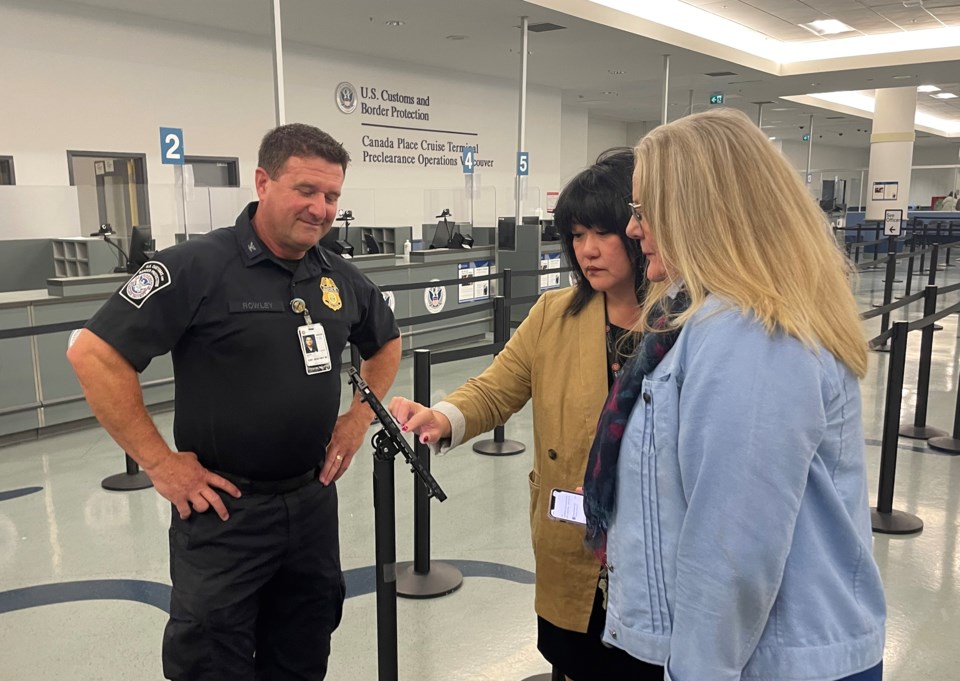Boarding a cruise ship in Vancouver just got easier and faster.
Vancouver is the first city in North America, and perhaps the world, to adopt biometric facial-scanning technology to speed boarding on cruise ships, according to the Vancouver Fraser Port Authority (VFPA).
Passengers on Vancouver-departing cruise ships need to first get through U.S. Customs and Border Protection (CBP) because the ships tend to go to Alaska.
CBP agents recently started a new system for identifying embarking passengers. They now hold iPad-like devices to scan embarking passengers by taking photos of them. Those photos are then within seconds compared to photos in the passengers' pre-trip travel documentation to ensure that the person boarding is the person identified in the documents.
This new system replaces one that involved stand-alone passport-scanning kiosks and is only available for Canadian and American citizens. Passengers who are nationals of other countries will still need to go through the manual process of having documents checked.
When passengers depart the cruise ship at the end of the voyage, they will all continue to use kiosks as they go through Canadian customs and immigration.
BIV asked the VFPA for an estimated cost for the project and was told that it was "marginal." The program is operated with support from SSA Marine, which provides operational management at the Canada Place cruise terminal on the port authority’s behalf.
The VFPA told BIV in an email that the new technology has not changed how many staff it bases at the cruise-ship terminal.
The VFPA partnered with U.S. Customs and Border Protection to introduce the biometric facial-scanning innovation during what is expected to be the city's biggest-ever cruise season.
Cruise ships are scheduled to visit Vancouver's Canada Place cruise terminal 329 times between March 11 and Oct. 29, carrying an estimated 1.27 million passengers, up about 1.6 per cent from last year's record of 1.25 million passengers.
The rise in passengers and a constrained and aging facility combine to heighten the need for speedy processing.
There are 20 U.S. cruise-ship terminals where facial biometric scanning technology is used when passengers disembark ships but this is the first time that the technology is being used for embarkation, the VFPA told BIV.
Virginia-based Pangiam, which is part of BigBear.ai, developed the technology.
"Our approach uses state-of-the-art computer vision and AI (artificial intelligence) to capture accurate facial recognition in real time, and instantly transmits to secure biometric matching services, ensuring immediate passenger identity verification," said Kevin McAleenan, president of BigBear.ai, and former acting secretary of U.S. Department of Homeland Security.
Anyone who does not want to use the new biometric boarding system is able to notify a Canada Place cruise terminal representative as they enter the primary inspection point and will instead be required to present valid travel documents for a manual inspection, according to the VFPA.
Each cruise that departs Vancouver is estimated to have a $3-million impact on the Vancouver economy.





